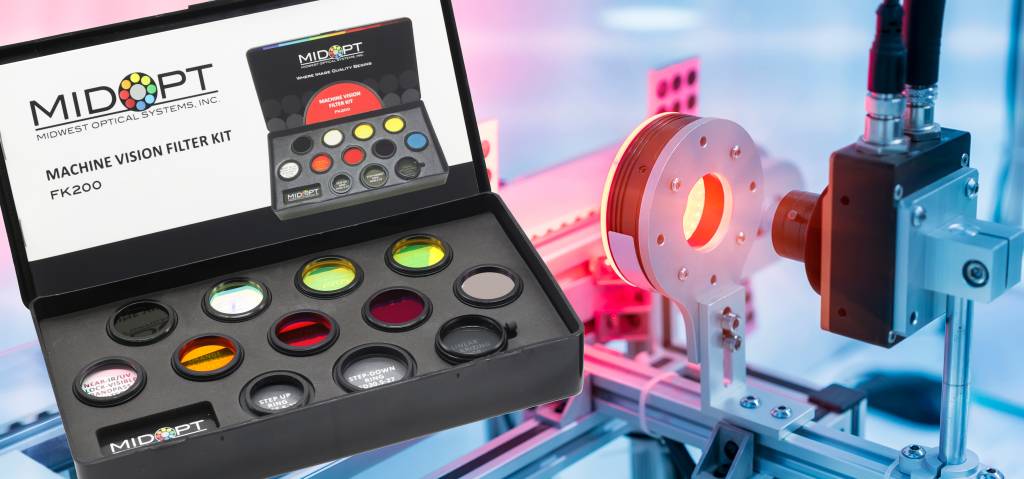
Choosing the appropriate lighting for a system is essential but selecting the proper wavelength of light is even more important. Users can test before investing in expensive lighting hardware with the FK200 machine vision filter kit. It features ten popular bandpass filters used in machine vision. By using optical filters together with white light, you can determine the specific wavelength that maximizes contrast and improves the resolution of the feature you want to isolate. Once you obtain that information, you can invest in the proper lighting hardware. Here’s how it works: use a broad-spectrum light source or white light, thread a filter onto the lens and securely fasten it, adjust accordingly to find the ideal focus and iris settings. The filters have 27mm threaded mounts. If necessary, step-up and step-down rings can be used to accommodate a 25.5mm or 30.5mm lens. The kit also includes a polarizing film and filter for glare reduction. Polarizing filters for the camera lens should be used in combination with polarizing film for the light source to decrease glare, help block incident light and achieve the best results. All filters are designed with the following key features:
- Wavelength Control: Short-shifting occurs when conventional filters are placed in front of industrial imaging lenses with focal lengths of 12mm or less. Stabledge filters utilize absorptive filter glass to form the leading edge of the filter passband. This assures no shifting in this region, even when the lens field-of-view exceeds 100 degrees.
- Passband Performance: Some filters on the market have a high, flat transmission profile, which allows ambient light to pass through the weaker tail ends of the LED spectral output curve. To ensure maximum performance, the position, height and width of the passband should emulate the bell-shaped spectral output curve (Gaussian curve) of the LED illumination being used.
- High-Transmission Anti-Reflection Coating: When a ray of light passes through a glass surface, a portion of the light is reflected, resulting in a 4% transmission loss per surface. MidOpt uses anti-reflection coating that reduces surface reflection to less than 1%, increasing transmission, enhancing contrast and eliminating ghost images.
- Optimal Performance and Repeatability: MidOpt examines every filter to ensure near-flawless surface quality and inspects them using state-of-the-art spectrophotometer technology to ensure optimal performance and repeatability. They are also one of the only manufacturers to use controlled torque when securing filters into their mounts, eliminating distortion and guaranteeing optical flatness.
www.midopt.com
